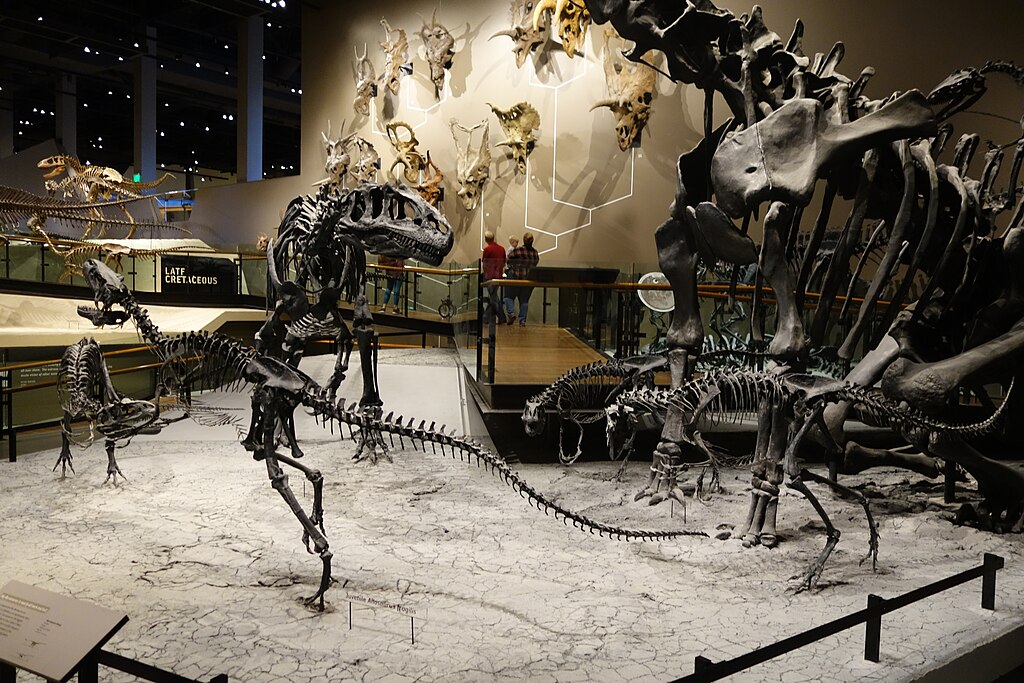The evolutionary journey of whales represents one of the most dramatic transformations in the history of life on Earth. Approximately 50 million years ago, certain land-dwelling mammals began a remarkable transition back to the ocean—a reversal of the ancient journey their ancestors had made when vertebrates first colonized land. These creatures, once four-legged terrestrial animals, evolved over millions of years into the streamlined, fully aquatic cetaceans we recognize today. Their story, preserved in an exceptional fossil record, provides one of evolution’s most compelling narratives and offers profound insights into adaptation, natural selection, and the interconnectedness of life on our planet. The walking whale—a term often used to describe transitional whale ancestors—represents a fascinating chapter in the story of how mammals reclaimed the sea.
Ancient Origins: From Land to Sea
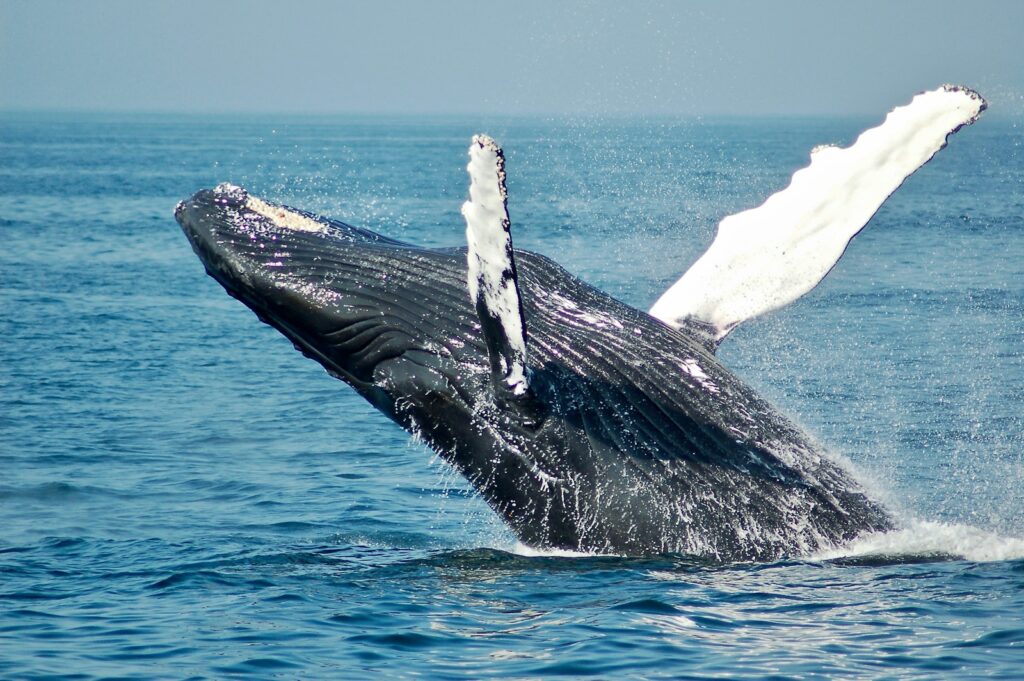
Modern whales evolved from artiodactyls—even-toed hoofed mammals whose closest living relatives include hippopotamuses. Genetic and fossil evidence confirms this seemingly improbable connection, demonstrating that cetaceans share a common ancestor with hippos that lived roughly 55 million years ago. This ancestor was a small, deer-like creature that walked on four legs and lived near water. The earliest whale ancestors, known as archaeocetes, began their aquatic transition during the Eocene epoch, a time of global warming that created new ecological opportunities in shallow seas. Unlike most evolutionary transitions, which may be poorly documented in the fossil record, the whale’s journey from land to sea is exceptionally well-preserved, with numerous intermediate forms showing gradual adaptation to aquatic life. These fossils tell a story of incremental change—limbs becoming flippers, nostrils migrating to become blowholes, and bodies becoming streamlined for efficient swimming.
Pakicetus: The First Steps Toward an Aquatic Lifestyle
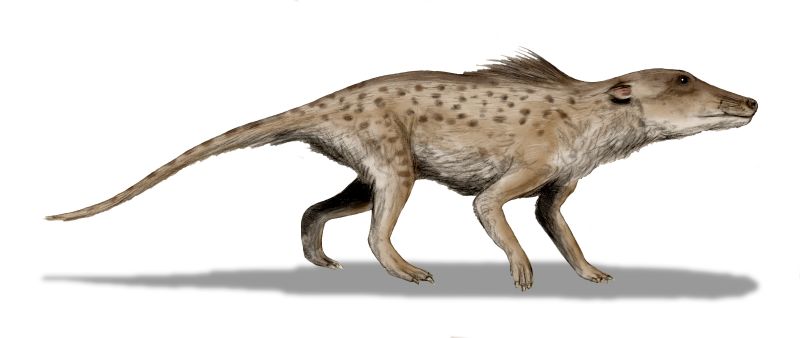
Pakicetus, discovered in Pakistan (hence its name), represents one of the earliest known whale ancestors from approximately 50 million years ago. About the size of a wolf or large dog, this creature displayed a fascinating mix of terrestrial and aquatic adaptations. Its skeleton was still largely that of a land mammal with four fully functional legs, but subtle changes in its skull, particularly the structure of its ears, provide the first clues to its evolutionary destiny. The ear structure of Pakicetus featured a thickened bony region called the auditory bulla, a characteristic found in all modern whales that helps in underwater hearing. While clearly not a full-time swimmer, Pakicetus likely waded in shallow waters, perhaps hunting fish or other aquatic prey along ancient riverbanks. Fossil evidence suggests these animals lived in monsoon-fed forests and streams that emptied into the ancient Tethys Sea, marking the very beginning of the whale’s evolutionary journey back to water.
Ambulocetus: The Walking and Swimming Whale
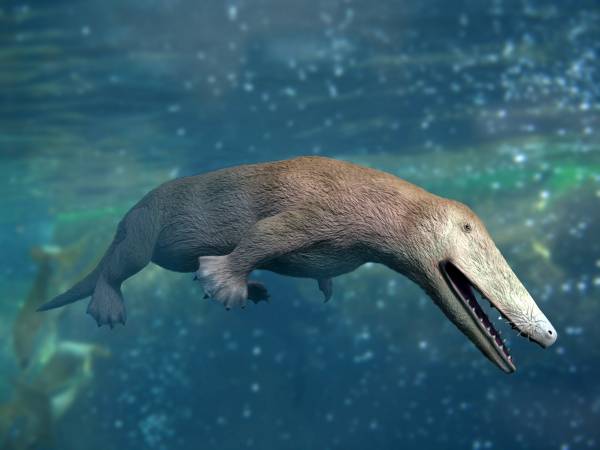
Ambulocetus natans, whose name literally means “walking whale that swims,” represents a crucial transitional form in whale evolution from about 48 million years ago. Discovered in Pakistan in 1994, this remarkable creature was approximately the size of a large sea lion, reaching lengths of about 10 feet and weighing around 800 pounds. Unlike its predecessor Pakicetus, Ambulocetus showed clear adaptations for a semi-aquatic lifestyle while retaining the ability to move on land. Its front limbs were shorter than its hind limbs, and its feet were adapted with long, possibly webbed digits that would have aided in swimming. Ambulocetus likely swam using a vertical undulation of its spine—similar to how modern otters swim—rather than the horizontal tail movements seen in modern whales. Its large powerful jaws and teeth suggest it was an ambush predator that may have hunted like modern crocodiles, lurking in shallow waters before lunging at prey crossing rivers or swimming nearby.
Remingtonocetus: Adapting to Marine Environments

Living approximately 46-43 million years ago, Remingtonocetus marks the next significant stage in early whale evolution, showing further adaptations to an increasingly marine lifestyle. These creatures had elongated bodies reaching about 10-13 feet in length, with relatively small limbs that suggest they were better adapted for swimming than walking on land. One of their most striking features was an elongated snout, which may have been specialized for capturing fish or probing in sediment for food. Their eye sockets were positioned higher on the skull, allowing them to see while mostly submerged—similar to modern crocodiles. Perhaps most significantly, these animals experienced dramatic changes in their sensory systems, with reduced importance of vision and smell in favor of enhanced hearing capabilities specialized for underwater environments. Fossil evidence indicates Remingtonocetus inhabited coastal marine environments, including lagoons and estuaries, representing a crucial step in the transition from freshwater to fully marine habitats that later whales would exclusively occupy.
Basilosaurus: The Sea Serpent Whale
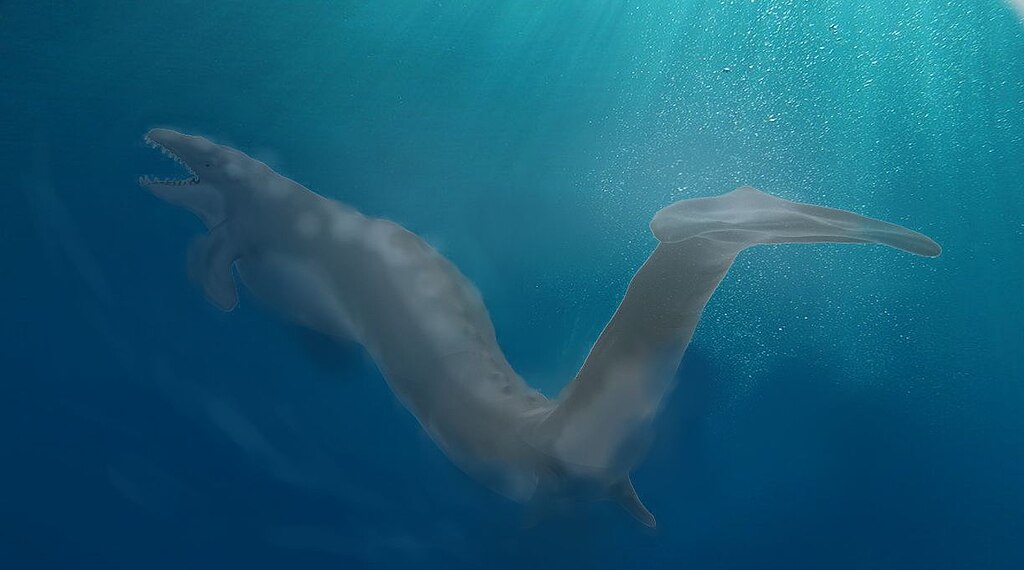
Basilosaurus, whose fossils date to approximately 40-34 million years ago, represents a dramatic shift in whale evolution toward a fully aquatic existence. With its serpentine body reaching up to 60 feet in length, Basilosaurus was initially mistaken for a marine reptile—hence its name, which means “king lizard.” Unlike earlier transitional whales, Basilosaurus was fully committed to marine life, with a streamlined body propelled by powerful tail flukes and small, vestigial hind limbs that were entirely useless for terrestrial locomotion. These tiny hind limbs, just a few feet long on a creature the size of a modern sperm whale, provide compelling evidence of Basilosaurus’s evolutionary history as a descendant of four-legged land mammals. As a top predator in the ancient oceans, Basilosaurus had large teeth and powerful jaws adapted for capturing prey including fish and possibly smaller marine mammals. Despite its impressive size and predatory nature, Basilosaurus represents an evolutionary side branch rather than a direct ancestor of modern whales—a reminder that evolution often explores multiple pathways rather than proceeding in a straight line.
Dorudon: The Forerunner of Modern Whales
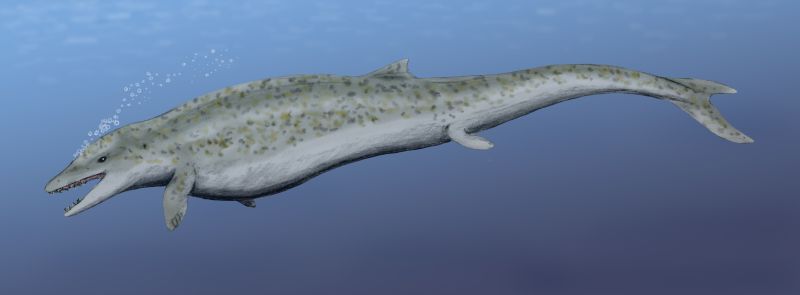
Living alongside Basilosaurus approximately 40-33 million years ago, Dorudon represents a crucial evolutionary link between ancient walking whales and modern cetaceans. Considerably smaller than its contemporary Basilosaurus at about 16 feet long, Dorudon had a body plan much closer to modern whales, with a more robust skeleton capable of supporting powerful swimming muscles. Fossil evidence reveals that Dorudon possessed a fluke-like tail for propulsion through water and front limbs that had fully evolved into flippers with shortened, flattened digits. Like Basilosaurus, it retained tiny vestigial hind limbs—complete with miniature femurs, kneecaps, and even toes—that were entirely enclosed within its body and served no locomotor function. Unlike the serpentine Basilosaurus, Dorudon is considered much closer to the ancestor of today’s whales, particularly to the toothed whales (odontocetes) such as dolphins, orcas, and sperm whales. Fossilized skulls show adaptations for underwater hearing and evidence of the precursors to the melon, the fatty organ modern toothed whales use for echolocation.
The Evolution of Echolocation: A New Way to Navigate

As early whales committed fully to aquatic life, they faced the challenge of navigating and hunting in murky waters where vision offered limited assistance. The evolution of echolocation—a biological sonar system—represents one of the most remarkable adaptations in cetacean history, transforming how these mammals perceived and interacted with their environment. This sophisticated system, found in all modern toothed whales but absent in baleen whales, began developing approximately 35-30 million years ago. Echolocation involves producing high-frequency clicks that bounce off objects in the environment and return as echoes, which the whale’s highly specialized auditory system can interpret to create a detailed “sound picture” of its surroundings. The development of echolocation required profound changes to whale anatomy, including the evolution of the melon (a fatty organ in the forehead that focuses sound waves), specialized air sacs, and significant modifications to the inner ear. Fossil evidence of these changes appears in toothed whale ancestors from the Oligocene epoch, suggesting that echolocation evolved relatively quickly after whales became fully aquatic, providing them with a revolutionary sensory system that opened new ecological niches for exploitation.
The Divergence: Toothed and Baleen Whales
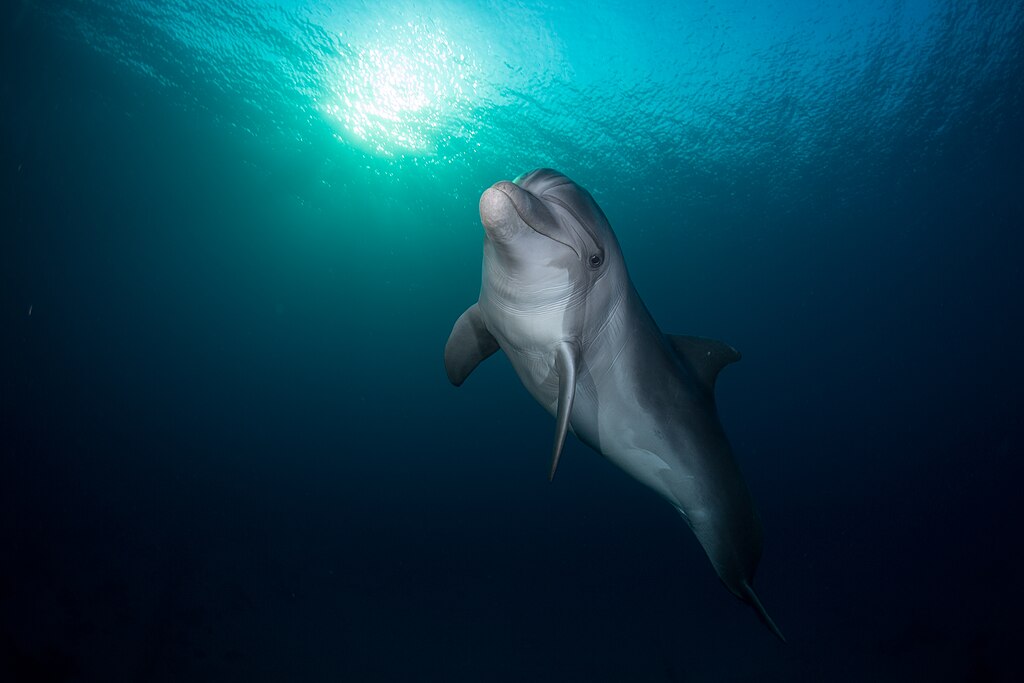
Approximately 34 million years ago, during the Eocene-Oligocene transition, whale evolution reached a significant junction with the divergence of two distinct lineages: the odontocetes (toothed whales) and mysticetes (baleen whales). This evolutionary fork in the road produced two radically different feeding strategies that allowed whales to exploit distinct ecological niches in the world’s oceans. Toothed whales, including dolphins, porpoises, orcas, and sperm whales, evolved specialized dentition for capturing individual prey items such as fish and squid, often using their echolocation abilities to hunt effectively. Baleen whales, including blue whales, humpbacks, and right whales, took a different path, evolving baleen—plates of keratin that hang from their upper jaws and filter small prey like krill and small fish from seawater. This filter-feeding adaptation allowed mysticetes to harvest enormous quantities of tiny organisms efficiently, ultimately enabling some species to evolve into the largest animals that have ever lived. The fossil record documents this divergence clearly, with early mysticetes such as Aetiocetus showing a transitional form with both teeth and primitive baleen structures, offering a glimpse into this crucial evolutionary transition.
Gigantism in the Oceans: The Rise of the Giants
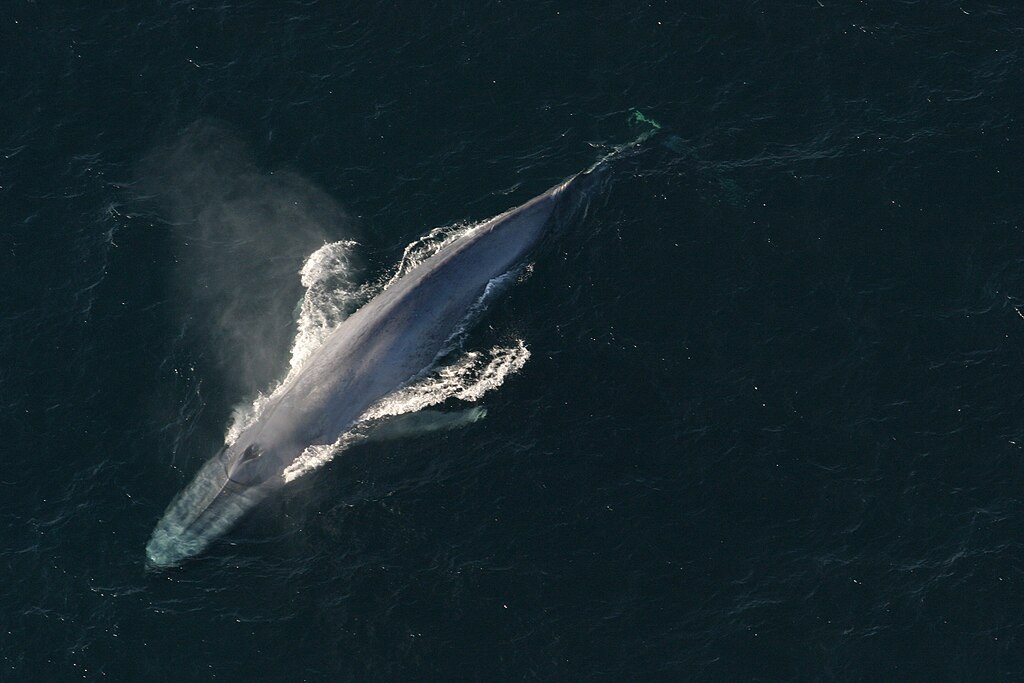
One of the most striking aspects of whale evolution is the trend toward gigantism, particularly in the baleen whale lineage, culminating in the blue whale—the largest animal ever to have lived on Earth. This extraordinary size increase occurred relatively recently in evolutionary terms, with most of the dramatic growth happening within the past 5 million years. The adaptation toward gigantism was made possible by the buoyancy provided by water, which eliminated many of the constraints that limit the size of land animals. Additionally, the filter-feeding strategy of baleen whales created an evolutionary advantage for larger body sizes, as bigger whales could take in greater volumes of water and extract more prey with each feeding cycle. The evolution of gigantism accelerated dramatically during the Pliocene and Pleistocene epochs (5-0.01 million years ago), corresponding with climate changes that intensified ocean upwelling systems and concentrated prey resources. These environmental changes created feeding opportunities that favored ever-larger whale species capable of traveling long distances between seasonal feeding grounds while storing enormous energy reserves in the form of blubber. Today’s blue whale, reaching lengths of up to 100 feet and weights of 200 tons, represents the pinnacle of this evolutionary trajectory toward gigantism.
Genetic Evidence: Molecular Clocks and DNA Analysis

While the fossil record provides physical evidence of whale evolution, modern genetic analysis has added fascinating layers to our understanding of this evolutionary journey. Molecular studies have confirmed the close relationship between whales and artiodactyls (even-toed ungulates), with hippopotamuses being their closest living terrestrial relatives. DNA analysis suggests that whales and hippos shared a common ancestor approximately 55 million years ago, providing a timeline that aligns remarkably well with the fossil record. Scientists have identified specific genetic modifications that facilitated the transition from land to sea, including genes related to lung function, blood chemistry, and blubber development. For example, mutations in the gene encoding myoglobin—a protein that stores oxygen in muscles—allowed diving cetaceans to remain submerged for extended periods. Additionally, genetic analysis has revealed that certain sensory genes related to smell deteriorated as whales adapted to aquatic life, while genes associated with hearing underwent significant modifications to accommodate underwater sound perception. These genetic insights complement the fossil evidence, creating a more complete picture of the extraordinary anatomical and physiological transformations that occurred as mammals returned to the sea.
Parallel Evolution: Other Mammals That Returned to Water
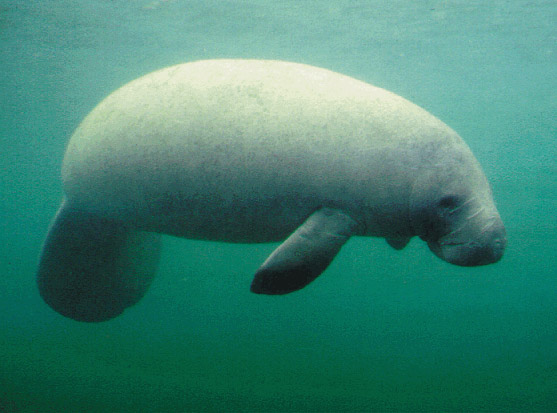
Whales aren’t the only mammals that made the evolutionary journey back to aquatic environments, though their transition is certainly the most complete. Several other mammalian lineages independently evolved aquatic or semi-aquatic lifestyles, providing fascinating examples of convergent evolution—the process by which unrelated organisms develop similar traits in response to similar environmental challenges. Sirenians (manatees and dugongs) evolved from four-legged land mammals related to modern elephants, developing flippers, horizontal tail flukes, and specialized aquatic feeding adaptations over the past 50 million years. Pinnipeds (seals, sea lions, and walruses) represent another independent transition to marine life, evolving from bear-like carnivores beginning around 30 million years ago, though they maintain the ability to move on land. More recent and less complete aquatic transitions can be observed in otters, polar bears, and even specialized rodents like beavers and muskrats, all of which have developed adaptations for swimming and aquatic feeding while retaining significant terrestrial capabilities. These parallel evolutionary journeys highlight the remarkable adaptability of mammals and demonstrate that the pressures and opportunities of aquatic environments have repeatedly drawn terrestrial lineages back to water throughout mammalian evolutionary history.
Modern Discoveries: New Fossils and Ongoing Research
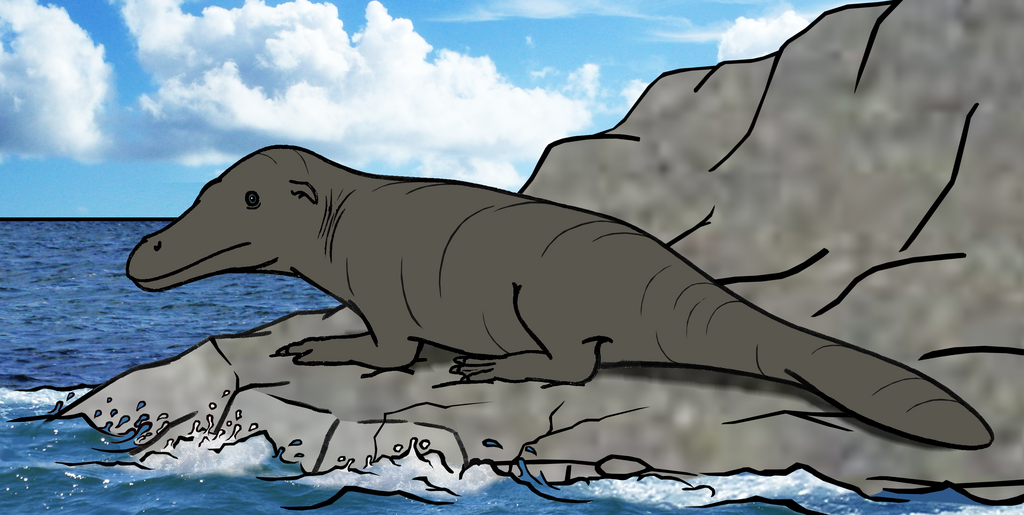
The scientific understanding of whale evolution continues to advance with new fossil discoveries and technological innovations in research methods. In the past two decades, particularly significant finds have come from Pakistan, Egypt, and Peru, filling important gaps in the evolutionary timeline. The discovery of Peregocetus pacificus in 2011 from 42.6-million-year-old marine sediments in Peru provided crucial evidence of early whales reaching the Americas while still possessing functional limbs for terrestrial movement. Advanced imaging technologies like CT scanning have allowed researchers to examine the inner ear structures of fossil whales, revealing crucial information about their sensory capabilities and environmental adaptations without damaging precious specimens. Biomechanical modeling, using computer simulations based on fossil anatomy, has enabled scientists to better understand how transitional whales moved both on land and in water, providing insights into the functional changes that accompanied their evolutionary transformation. Ongoing fieldwork in regions with Eocene and Oligocene marine deposits continues to unearth new transitional forms, with each discovery refining our understanding of the timing and sequence of adaptations that transformed land mammals into the fully aquatic cetaceans swimming in our oceans today.
Conservation Implications: Understanding the Past to Protect the Future

The evolutionary history of whales carries profound implications for modern conservation efforts aimed at protecting these remarkable animals. Understanding that whales required millions of years to evolve their specialized adaptations emphasizes the irreplaceable nature of these lineages and the devastating permanence of extinction. Many whale species face significant anthropogenic threats, including ship strikes, noise pollution, entanglement in fishing gear, chemical contamination, and the persistent effects of climate change on marine ecosystems. The evolutionary history of whales reveals their remarkable adaptability over geological timescales but also highlights the unprecedented pace of modern environmental changes that may exceed their capacity for adaptation. Conservation strategies informed by evolutionary understanding recognize the importance of preserving genetic diversity within whale populations, as this diversity represents the raw material for potential future adaptations. Additionally, evolutionary insights into whale sensory systems—particularly their reliance on sound for communication, navigation, and finding food—have informed regulations aimed at reducing noise pollution in critical marine habitats. By appreciating the extraordinary evolutionary journey that produced modern whales, we gain a deeper appreciation for what would be lost if these magnificent creatures disappeared from our oceans.
Conclusion

The evolutionary journey of whales from terrestrial mammals to ocean-dwelling giants stands as one of nature’s most extraordinary transformations. Over approximately 50 million years, the ancestors of modern whales underwent dramatic anatomical and physiological changes—limbs became flippers, nostrils migrated to become blowholes, and bodies streamlined for efficient swimming. This transition, documented through an exceptional fossil record from Pakicetus to modern cetaceans, represents not just an incredible evolutionary story but also a profound lesson in how life adapts to new environments and opportunities. The walking whale, far from being a contradiction in terms, reminds us of the deep connections between seemingly disparate forms of life on our planet. As we continue to study and protect modern whales, we honor not just the magnificent creatures that swim in today’s oceans but also their remarkable evolutionary legacy—a testament to life’s capacity for change and adaptation across the vast expanses of geological time.


